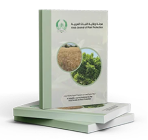E.A. Slebi and H.H. Al-Juboory (IRAQ)
Pages 465-473
eSSN 2412-5407
pISSN 0255-982X
مجلة وقاية النبات العربية
Arab Journal of Plant Protection
A Regional Scientific Journal Published Four Times a Year by the Arab Society for Plant Protection

eSSN 2412-5407
pISSN 0255-982X

Biological and Chemical Control of Melon Root Rot Disease: A Review
Abstract
Slebi, E.A. and H.H. Al-Juboory. 2024. Biological and Chemical Control of Melon Root Rot Disease: A Review. Arab Journal of Plant Protection, 42(4): 465-473. https://doi.org/10.22268/AJPP-001271
Melon is an important crop grown in different regions of the world, and similar to many other crops, it is exposed to many diseases, including root rot, which is caused by a number of pathogens such as Rhizoctonia solani, Fusarium solani, Macrophomina phaseolina, Fusarium oxysporum f. sp. melonis (Fom), which causes Fusarium wilt and Monosporascus spp. which causes Monosporascus root rot and vine decline. To reduce the use of chemical pesticides because of their negative impact on health and the environment, biological control factors and some safe chemical agents are being increasingly used to control this disease. Many studies have shown the effectiveness of Trichoderma spp. and Bacillus subtilis, and vermicompost in reducing the disease by inhibiting the fungal growth of these pathogens present in the soil and inducing resistance in the melon plant against the disease. In addition, the use of algae was found to be efficient in the control of the disease. The use of some chemical agents, such as potassium salt (K2HPO4) and tannic acid, had a role in inhibiting some pathogens in the soil. This article summarizes research conducted to test the role of biological factors (vermicompost, microorganisms, and algae) as well as some chemical agents (tannic acid and K2HPO4) in controlling melon root rot disease.
Keywords:
Melon root rot, biological control, K2HPO4, vermicompost, algae.


 https://doi.org/10.22268/AJPP-001271
https://doi.org/10.22268/AJPP-001271  Download PDF
Download PDF